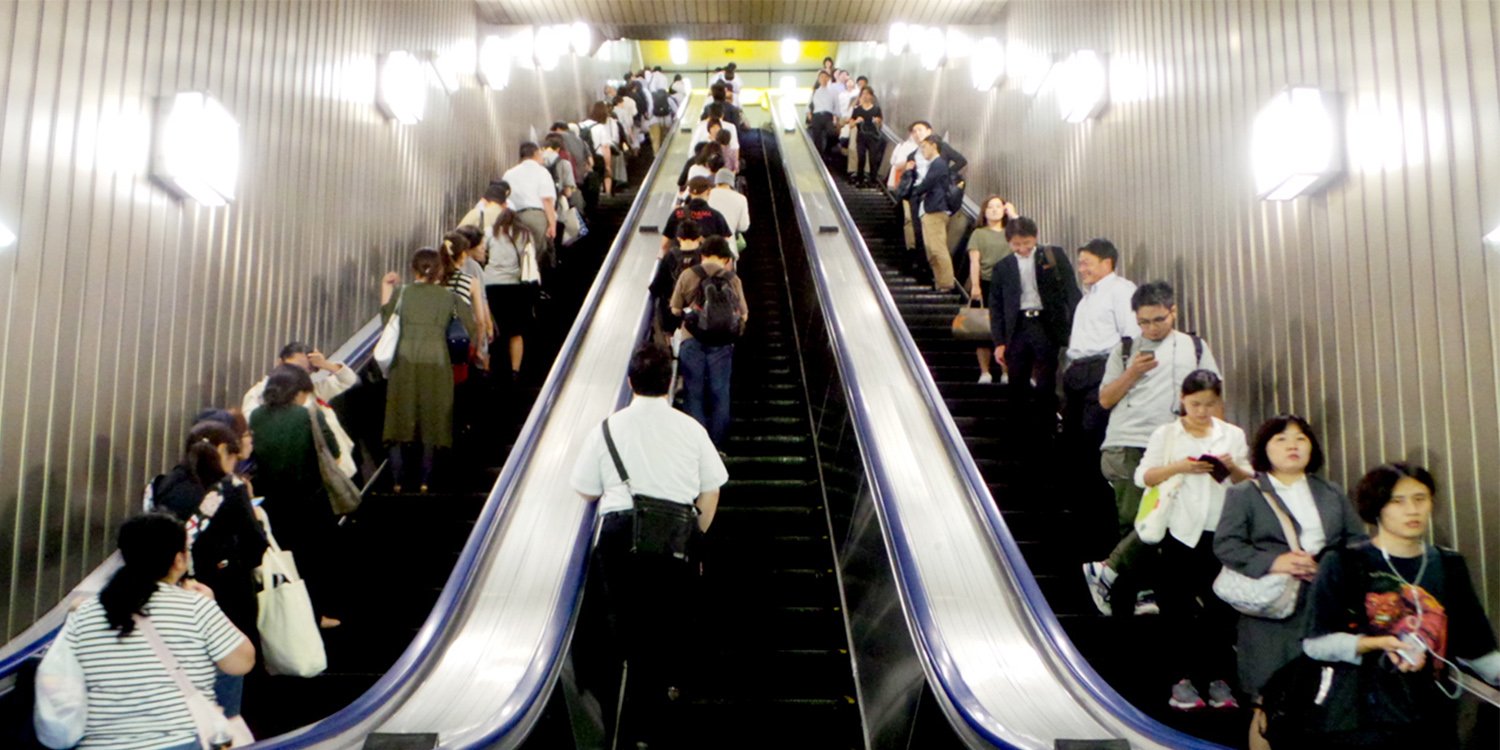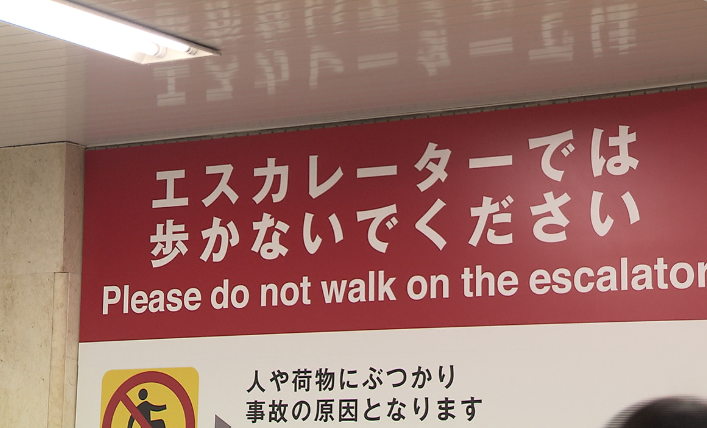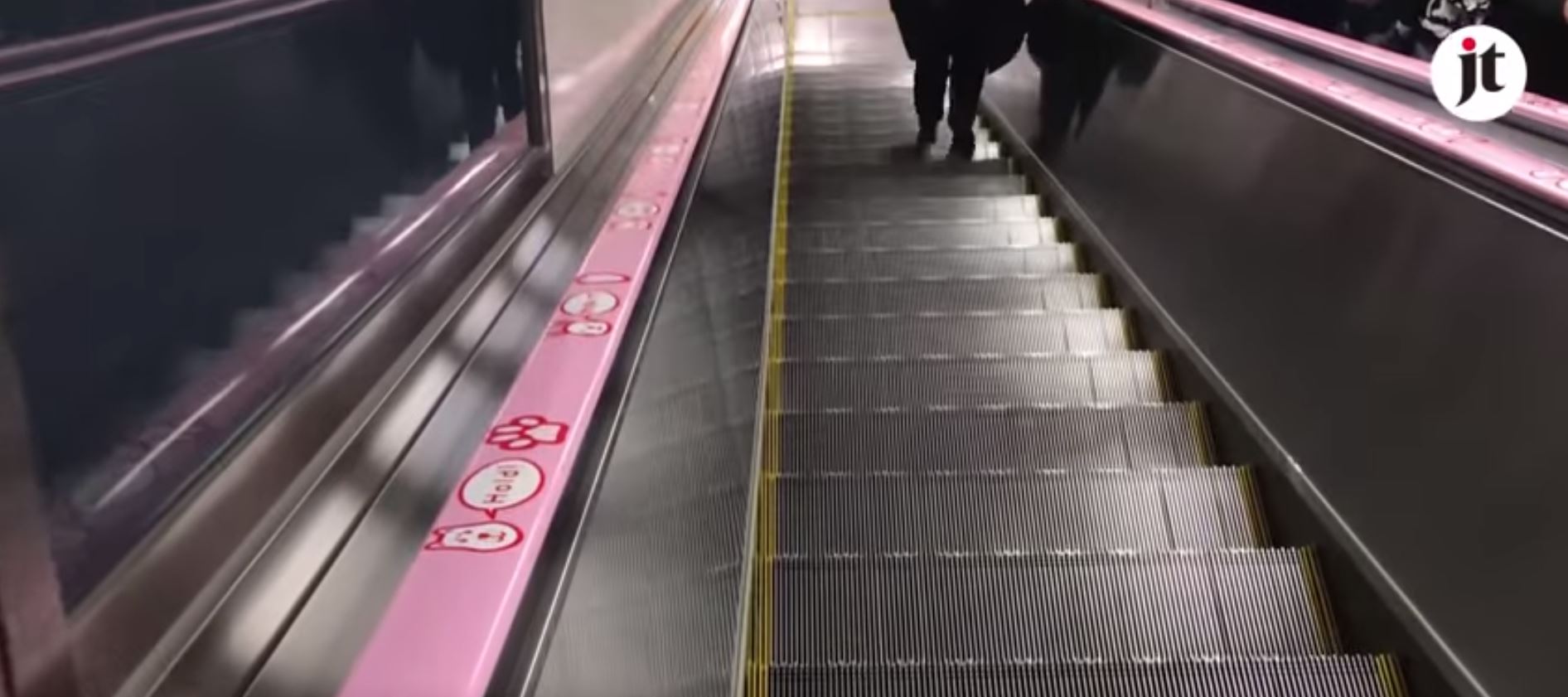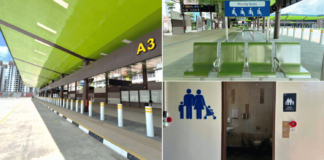You Could Exit The Escalator In Japan Quicker If You Don’t Walk Up
If you take the MRT regularly, you may have experienced being stuck on the escalator because of someone blocking the way. And then you’ll either have to ask them to move or try and squeeze past them — it’s pretty frustrating.
Ironically, the East Japan Railway Company – which runs subways in Tokyo – is encouraging just that.
The initiative launched on Monday (17 Dec) encourages commuters to stand on both sides of the escalator. The reason? To stop passengers from hurrying up the escalator and risk getting injured.
To promote the safety of commuters
The campaign not only serves to prevent falls by overly hasty commuters, but also encourages commuters to accommodate elderly or disabled passengers.
Tokyo Station is the only place where the initiative has been rolled out for now. Signboards have even been put up to urge commuters not to walk up the escalator if they aren’t in a hurry.
Lining the escalator handrails are pink tapes and drawings of cats – trust Japan to make everything more adorable – with speech bubbles reading, “Don’t walk!” and “Hold!”.
Unfortunately, for a hardworking city like Tokyo, not rushing up the escalator isn’t an option.
Many people have continued to ignore the signs and stand on the left or rush up the right flank, according to Japan Times.
More efficient if both sides stand
More than safety, standing on both sides may actually help you leave the station more quickly — yes, more quickly.
This is according to a 2011 research paper from the University of Greenwich.
The rationale is this. On average, about 75% of people stand, while 25% walk. This means that half of the escalator is reserved for only a quarter of all its users. We won’t go into the math, but you probably get the idea.
Think about it — instead of lining up to fill just 1 side, we’re lining up to fill both sides. So it’s possible that you’ll get out of the station faster.
Will this work in Singapore?
Obviously, implementing this system locally in Singapore will be very difficult.
The idea itself sounds counter-intuitive and I can almost imagine a Singaporean retorting, “Standing faster than walking meh? How can?”
For now, let’s wait and see how the initiative unfolds in Japan.
When commuters there start following the new system and word gets out that it actually improves efficiency, we might just be open to following suit.
Featured image from Alyssa Paula.

Drop us your email so you won't miss the latest news.













